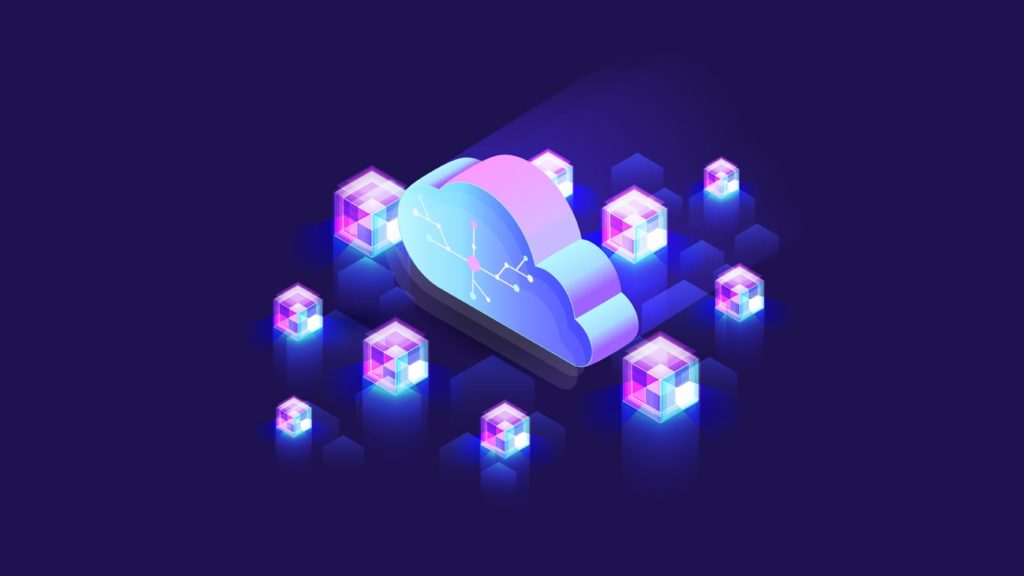
The current technologies look for ways to increase the overall efficiency of the system with fewer resources. This was one of the reasons behind the development of virtualization technology. With virtualization, you can run multiple operating systems and applications on a single computer or server. That way, the physical systems are migrated into a virtual environment, in the process, reducing the overall IT overhead and management costs.
Basically, with virtualization, what you are getting is a single machine that acts as multiple virtual computers. There is also a hypervisor, the software layer that allows a single machine to run various independent operating systems concurrently.
Thus, it minimizes hardware needs while streamlining processes. Having said this, now it’s time we explore the definition, examples, and application of virtualization technology.
What is virtualization technology?
From the introduction, you might have got an idea of what virtualization technology is.
Virtualization technology is a method used to create virtual representations of physical resources such as servers, storage devices, and network resources. It allows multiple operating systems and applications to run on the same machine at the same time, maximizing the efficiency of hardware usage.
Virtualization is widely used in data centers and cloud computing environments to improve scalability, manageability, and cost-effectiveness.

In this technology, you get virtual instances of IT services that were previously limited to hardware. Also, it caters to the different needs of different users in a single machine. Therefore, it eliminates the need to switch computers. The hypervisors create and run multiple virtual machines (VM), where programs in one VM can be isolated from the other to protect it from other VM’s processes.
Plus, as the applications can run independently on the VMs, it allows portability. This is to say, you can leverage virtualization to use your resources optimally and improve efficiency.
Examples of virtualization technology
Now that we have covered the definition of virtualization technology, let’s look at noteworthy examples of virtualization:
Desktop virtualization
If you want to access your desktop from any computing device, then desktop virtualization is for you. It allows the creation of a virtual version of the user’s desktop environment and operating system to be accessed on other devices. Typically, there are three deployment models for desktop virtualization — Virtual Desktop Infrastructure (VDI), Remote Desktop Services (RDS), and Desktop-as-a-Service (DaaS).
In VDI, the users can interact with the desktop as they would do locally, while the operating system runs on the VM hosted on the server. RDS is similar to VDI with the difference that it supports simultaneous users, unlike VDI where only one user is supported.
Lastly, in DaaS, the third party hosts the VMs on a cloud. Ultimately, it improves productivity by allowing employees to access business computing resources from anywhere.
Server virtualization
Businesses are switching to server virtualization as it allows them to partition a single physical server into a series of virtual servers. The applications can then be installed on these servers. The obvious advantage of server virtualization is that it utilizes the hardware resources completely and eliminates the costs associated with hardware and infrastructure.
Along with increasing the capacity of the machine, server virtualization provides improved disaster recovery. As we all know, planning disaster recovery essential for the survival of the business.
One great example of server virtualization is VPS hosting servers. They basically creates virtual machines on the same server that can be upscaled or downscaled based on the user preference. Resources such as CPU, RAM, Disk space, etc. can be configured accordingly. We discussed the advantages and disadvantages of virtual memory in the past. It will give you an idea about hardware virtualization.
Network virtualization
In network virtualization, the network functions are transformed from the hardware such as connection, router, and switches into the software. The disconnection of functions from physical resources allows keeping hardware unchanged while making changes to the software. Also, the network can be easily segmented, improving security in the process. Finally, it secures the physical devices from destruction.
Cloud virtualization
Cloud virtualization allows the users to not only share the data of cloud-based applications but also their infrastructure. The virtual resources are offered in the form of cloud virtualization models — Infrastructure-as-a-service (IaaS), Platform-as-a-service (PaaS), and Software-as-a-service (SaaS).
In IaaS, the users can configure the virtualized network, server, and storage provided by the cloud providers to suit their needs. As for PaaS, users can utilize the platform to build applications and services using virtualized cloud services, databases, and development tools. Whereas in SaaS, the users use the software in the cloud that is offered by the cloud providers.
Storage virtualization
In the above examples, we have seen how physical resources are divided into virtual ones. But virtualization is not only about dividing, the perfect example of this is storage virtualization.
In this virtualization, the information is centralized so that it appears as a single virtual storage device. The data is growing exponentially, hence we need storage virtualization to maximize the use of data storage. Furthermore, it brings flexibility by virtualizing storage.
Applications of virtualization technology
After going over the representatives of virtualization technology, it is nigh time to turn to its application. The following are the applications of virtualization technology:
Increases efficiency
With virtualization, you can skip the lengthy and capital-intensive process of deploying new hardware for running applications. Now you have less hardware to make the most out of. In fact, you can manage all your VMs through a single device.
The reduction in hardware reduces the time, effort, and cost invested in its maintenance. This increases the efficiency of the system significantly. Also, it’s popular among developers as it eliminates the need for extra hardware that allows them to experiment.
Reduces expense
Traditionally, businesses used to deploy servers for running applications. This left them with multiple hardware resources that sat idle when the applications were not in use. It was undoubtedly a bad business move.
Hence, virtualization is used popularly to utilize the full potential of servers, or existing infrastructure. That way, the need for purchasing more hardware is eliminated while reducing the expense. Also, leveraging virtualization is more cost-effective than purchasing and maintaining new hardware.
Maximizes service availability
Virtualization allows you to easily set up virtual environments. Consequently, you can easily access your virtual environment irrespective of the physical distance between you and your hardware. This ultimately attenuates the potential downtime. Virtualization ensures maximum service availability while eliminating hardware or software failure through its reliable features and service.
Reduces power consumption
The decrease in power consumption is directly related to the reduction of hardware requirements. Now that we have come to the end of the discussion, you know virtualization reduces hardware needs by creating virtual instances. The good news is that this also minimizes the carbon footprint.
Additionally, when new hardware comes into the picture, it consumes a lot of time for its deployment and is subjected to the traditional environment. Whereas, virtualization brings resiliency. Thanks to the backup of VMs, which can then be easily deployed as and when required in little to no time.
Types of Virtualization
People can use virtualization technology in several ways to get the most out of it. It can emulate the physical infrastructure and associated benefits of a number of devices. As such, there are many types of virtualization available, which we have mentioned below:
- Server Virtualization: The process that partitions physical servers into numerous virtual ones for effective utilization of computational resources.
- Storage Virtualization: It is used to combine the functions of a physical storage device, such as a NAT, with storage area networks. Thus, by pooling all your physical storage, you can create much larger virtual storage.
- Network Virtualization: The process that combines all other network resources into a centralized structure, either via software or hardware.
- Data Virtualization: Collected data is stored in different formats, places, and storage. And that’s where data virtualization comes into play by adding a software layer on top of collected data so that it can be centralized.
- Application Virtualization: This is the process where applications are made to run on any OS. It is achieved by three methods: app streaming, server-based app virtualization, and local app virtualization.
- Desktop Virtualization: One of the most common types of virtualization used, desktop virtualization allows non-technical users to run business applications on virtual machines.
Is Virtualization different from Cloud Computing?
Yes, cloud computing and virtualization are as different as night and day. While cloud computing is basically the on-demand delivery of computer resources, it is virtualization that makes it possible.
Cloud computing is an internet-based delivery service that mostly adopts pay-as-you-go pricing. Here, the user doesn’t have to buy, maintain, or own a physical data center, as they can simply rent the relevant technology services such as computing power, storage, database centers, servers, etc. from a cloud service provider.
And this is where virtualization rocks. Cloud service providers set up their own data centers to offer different services, and in order to do so, they create multiple virtual environments based on their hardware. Lastly, they provide the API for these services, which can be used to create a virtual infrastructure.
Advantages and Disadvantages of Virtualization
The following table lists the various advantages and disadvantages of virtualization technology:
| Advantages | Disadvantages |
|---|---|
| Can make the most of computer resources | Managing a virtual environment is a complex task requiring specialized skills |
| Helps with cost as there is a reduction in hardware usage. | Performance might suffer as hardware resources are shared |
| It is very easy to scale | It is prone to cyberattacks |
| Backup and recovery are much faster | Virtualization software can have licensing costs |
| It is very flexible, as new VMs can be installed quickly. | Chances are, highly resource-intensive applications might not work |
| It is suitable for testing and development purposes. | Then there might be certain applications that do not work with virtualization |
| Can create an isolated environment, preventing any threats. | |
| Can create a centralized infrastructure, which is better for the administration |